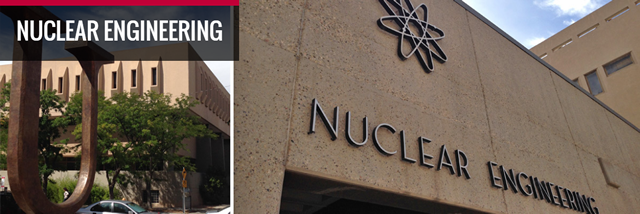
Nuclear Engineering ETDs
Publication Date
7-11-2013
Abstract
The Very High Temperature Reactor (VHTR) is a Generation-IV design in the conceptual pre-licensing phase for potential construction by 2030-2050. It is graphite moderated, helium cooled reactor that operates at an exit temperature of up to 1273 K, making it ideal for generating electricity at a plant thermal efficiency upwards of 48% and the co-generation of process heat for hydrogen production and other industrial uses. Extensive thermal-hydraulics and safety analyses of VHTRs are being conducted using Computational Fluid Dynamics (CFD) and heat transfer codes, in conjunction with experiments and prototype demonstrations. These analyses are challenging, largely due to the 3-D simulation of the helium flow in the 10 m long coolant channels in the reactor core and the need to examine the effects of helium bypass flow in the interstitial gaps between the core fuel elements. This research, performed at the UNM-ISNPS, developed an effective thermal-hydraulics analyses methodology that markedly reduces the numerical meshing requirements and computational time. It couples the heliums 1-D convective flow and heat transfer in the channels to 3-D heat conduction in graphite and fuel compacts of VHTR fuel elements. Besides the helium local bulk temperature, the heat transfer coefficient is calculated using a Nusselt number correlation, developed and validated in this work. In addition to omitting the numerical meshing in the coolant channels, the simplified analysis methodology effectively decreases the total computation time by a factor of ~ 33 - 40 with little effect on the calculated temperatures (< 5 K), compared to a full 3-D thermal-hydraulics analysis. The developed convective heat transfer correlation accounts for the effect of entrance mixing in the coolant channels, where z/D < 25. The correlation compares favorably, to within + 12%, with Taylor's (based on high temperature hydrogen heat transfer) and to within + 2% of the calculated results for full 3-D analyses of a VHTR single channel module and multiple channels in the fuel elements. The simplified methodology is used to investigate the effects of helium bypass flow in interstitial gaps between fuel elements and of the helium bleed flow in control rod channels on calculated temperatures in the VHTR fuel elements. Thermal-hydraulics analysis of a one-element high and of a full height VHTR 1/6 core are also conducted. Results show that the interstitial bypass flow increases the temperatures near the center of the core fuel elements by 10-15 K, while reducing the temperatures along the edges of the elements by ~30 K. Without bypass flow, hotspots may occur at the location of burnable poison rods in the fuel elements, depending on the assumed volumetric heat generation rate in the rods. The helium bleed flow through the control rod channels reduces temperatures near them by 2-5 K, and only slightly increases the temperatures within the rest of the core fuel elements. In the VHTR 1/6 core thermal-hydraulics analysis, the helium bypass flow decreases the heat transfer from the core fuel elements to the adjacent radial graphite reflector blocks. Results demonstrate the effectiveness of the developed methodology and its potential use in future thermal-hydraulics design and in the safety analyses of VHTRs.
Keywords
thermal-hydraulics, bypass flow, VHTR, Nusselt number correlation, helium coolant, prismatic fuel element
Sponsors
Institute for Space and Nuclear Power Studies, Department of Energy - Nuclear Energy University Programs, Nuclear Regulatory Commission - Graduate Fellowships
Document Type
Thesis
Language
English
Degree Name
Nuclear Engineering
Level of Degree
Masters
Department Name
Nuclear Engineering
First Committee Member (Chair)
Tournier, Jean-Michel
Second Committee Member
Rodriguez, Sal
Third Committee Member
El-Genk, Mohamed
Recommended Citation
Travis, Boyce. "An Effective Methodology for Thermal-Hydraulics Analysis of a VHTR Core and Fuel Elements." (2013). https://digitalrepository.unm.edu/ne_etds/30


